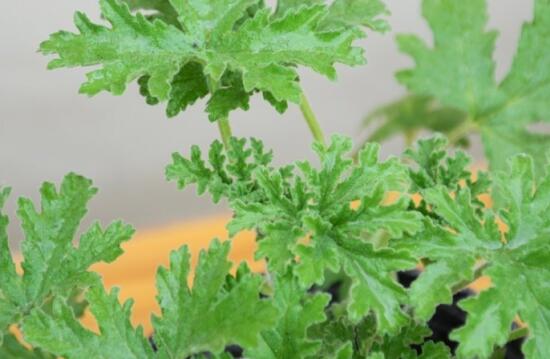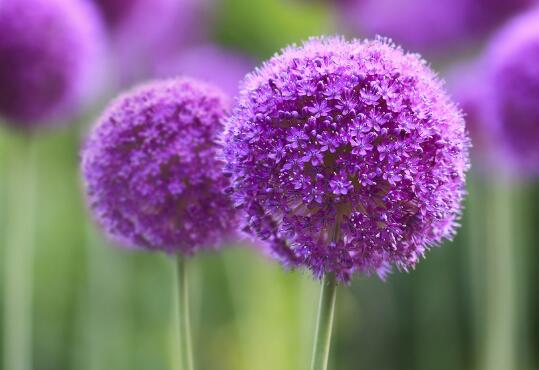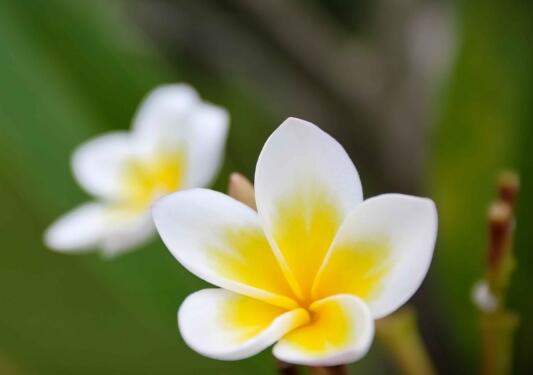What about mosquito repellent worms, mosquito repellent pest control / Phoenix butterfly killed immediately
Every summer, many people raise several pots of mosquito repellent at home, because with it, there is no need to worry about mosquitoes dare to approach! However, not all insects can be repelled by insect repellent, and if it is not properly maintained, it will also be attacked by diseases and insect pests, so what about mosquito repellent worms? The following are several kinds of mosquito repellent insect pest control, follow the editor to learn about it.
First, what to do to drive mosquitoes and grass to determine insect pests

Because of the efficacy of mosquito repellent grass, many people will raise a pot at home, but most people are novice, so many of them do not follow the breeding method of mosquito repellent grass, resulting in mosquito repellent worms, making it not difficult to repel mosquitoes! At this point, we should not be in a hurry, but should identify pests and then solve them. Generally speaking, mosquito repellent grass is mainly affected by three kinds of insect pests, so let's move on.
II. Pest control of mosquito repellent grass
1. Butterfly larvae
Although mosquito repellent can repel mosquitoes and other insects, but for Phoenix butterflies, mosquito repellent can not be done. It is understood that the butterfly larvae will eat harmful buds, tender leaves and adult leaves, and can eat 5-6 leaves in a lifetime. When the larva is frightened, it sticks out a pair of red or yellow antennae and secretes an unpleasant smell to drive away the invaders.
Prevention and control methods: after discovery, direct manual capture, spray control can also be carried out with 1000-1500 times of EC, 80-1000 times of trichlorfon, 80% dichlorvos or 50% fenitrothion, etc.
2. Mole cricket
One of the insect pests of mosquito repellent grass, it is a bug transmitted by water, which can cause the distance between the root of the plant and the soil, so that the plant can not absorb water badly.
Prevention and control methods: take it off if you can see it, or trap it with fresh horse dung, and then destroy it artificially; because mole cricket has phototaxis, it can also be trapped and killed by light.
3. Grub
The insect, also known as the beetle, is one of the main insect pests of mosquito repellent grass. It can feed on the roots of the plant and gradually invade the plant.
Control method: remove the bugs you see when turning the basin, and then sterilize the roots with pesticides.
4. Symptoms of falling leaves
After talking about insect pests, let's take a look at the diseases, the most common of which is the symptom of fallen leaves. Once improper maintenance, such as high air humidity, poor ventilation, etc., will lead to mosquito repellent grass roots will rot, resulting in leaves become wrinkled and shrunk.
Solution: at this time, we should spray some fungicides, pay attention not to spray too much. Note: if it is a short-term emergence of mosquito repellent leaves yellowing, falling phenomenon, this may be caused by temperature imbalance and insufficient light, at this time we only need to carry out sufficient light on time.
5. Dysplasia
In the mosquito repellent plant diseases and insect pests, there are often symptoms of dysplasia, at this time we should consider the soil problem. It is understood that mosquito repellent grass likes slightly acidic soil, if we use alkaline soil for cultivation, it will cause the plant to be short and stop growing.
Solution: loosen the soil on time, remove the topmost soil, re-add some new soil, and then add a small amount of dilution to improve soil properties, new soil pay attention to loose.
With regard to mosquito repellent pest control, the editor has introduced this. I believe that if you encounter mosquito repellent worms or get sick again, you should know how to do it! Generally speaking, mosquito repellent grass is rarely disturbed by diseases and insect pests, so as long as we take good care of it, these troubles will not be found. Finally, I hope everyone's mosquito repellent can play a mosquito repellent effect.
What about the worms of sage? control of diseases and insect pests of sage / 2 insect pests 2 diseases
When we cultivate sage, the last thing we want to encounter is diseases and insect pests, this kind of problem is very harmful to the plant, not only affect the ornamental, but also lead to the phenomenon of plant death. What about the worms of sage? What do we need to do to control the diseases and insect pests of sage? Next, the editor will take you to learn about it.
First, what about the worms of sage? find the reason.
If we want to know what to do with sage worms, we first need to know what kind of worms grow, so that we can deal with them specifically, because each kind of pest is treated differently. The details are described in detail below, you can learn about it.
II. Pest control of sage (pest)
1. Whitefly
Whitefly is a kind of small phytophagous piercing insect, which is very harmful to sage, it will gradually absorb the juice of its phloem, and because of its strong reproductive ability, it will appear very high density in a very short period of time, so as to absorb a large amount of juice and cause plant weakness.
Control method: when we deal with the diseases and insect pests of this sage, we can spray it with 1500 times EC, which can kill eggs, nymphs and adults.
two。 Aphids
Aphids are a common herbivorous insect with more than 4000 species in the world. Its body length is often less than 10 mm, so it is difficult to find. It will leave honeydew on the leaves of the plant and suck the sap of the leaves, causing the leaves of sage to wither, turn yellow, lose luster, and cause diseases such as coal fouling.
Control method: in view of the diseases and insect pests of this sage, we can directly use 2.5% methamphetamine emulsion 3000 times to spray it.
III. Pest control of sage (disease)
1. Leaf spot disease
Leaf spot is a disease that exists in many plants, and sage is no exception. It mainly harms the leaves, petioles and stems of sage. Many brown spots will appear in the affected parts during the disease, and the spots will spread gradually with the passage of time, and finally lead to the gradual death of the plant.
Control method: when we deal with the diseases and insect pests of this sage, we can use 1000 times of flusilazole to spray it, which is usually sprayed once every 7-10 days, and can be cured after 2-3 times.
two。 Blight disease
Rhizoctonia solanacearum is a disease caused by semi-known subphylum fungal infection, which mainly harms the stem base or underground root of sage seedlings. At the beginning, many dark brown irregular disease spots will appear in the affected part, and will gradually spread with the passage of the event. When the disease spot expands around the stem for a week, the plant will dry up and die.
Control methods: in view of the diseases and insect pests of this sage, we can spray the diseased plants with 1200 times of 20% methyl fumarate EC or 72.2% Prik water agent, usually once every 7-10 days, and it can be cured about 3 times.
Pitcher plant insect growth how to do, pitcher plant pest control / 1 insect 2 disease spraying
When it comes to pitcher plants, everyone will think of its function of catching mosquitoes and flies, but did you know that even such a mosquito repellent plant can grow insects? Because the pitcher plant is a tropical plant, its growth will be affected in our country, and it will be attacked by diseases and insect pests if we don't pay attention to it. What about the pitcher plant growing insects? The following is pitcher plant pest control, let's go and have a look.
First, pitcher plants grow bugs how to do, spray
It is understood that pitcher plant is a tropical plant, breeding in most parts of our country, will have a certain impact on its growth, a little attention, pitcher plant will be attacked by diseases and insect pests. What about the pitcher plant growing insects? in fact, it is very simple, just spray. As for what kind of medicine to spray, there is a detailed introduction in the pitcher plant pest control. Let's move on.
II. Pest control of pitcher plants
According to the editor's inquiry, if the pitcher plant is not raised strictly according to the breeding method, the pitcher plant is easy to get leaf spot, root rot, sunburn and so on. Among them, leaf spot disease and root rot disease are more harmful, and they will also be invaded by shell insects. The specific symptoms and control methods are as follows:
1. Root pink scale
A kind of shell insect that mainly feeds on the fresh juice of pitcher plants. Symptoms of infringement: the leaves of pitcher plants yellowed, withered, and even fell, seriously affecting the ornamental effect of pitcher plants.
Control method: if a small amount of root pink scale is found, it can be wiped off with a brush or burnt cloth, then the diseased leaves can be cut off and burned centrally to reduce the source of the disease. finally, it can be sprayed with 1000-1500 times EC or 25% Icas EC to check and kill, pay attention to both the positive and negative sides of the branches, which can improve the insecticidal rate.
2. Leaf spot
One of the diseases and insect pests of pitcher plants, which mainly infects its leaves. Symptoms: waterlogged and small spots appear on the leaves, gradually expanding, forming oval spots, brown. A black mildew layer was produced in the disease, which ruptured in the later stage. Seriously affect the plant growth and ornamental effect.
Control methods: timely removal of diseased leaves and centralized destruction, in order to reduce the source of the disease; when the disease occurs, spray germicidal or 1000 times antibacterial solution, spray evenly, the whole plant should be sprayed to the back of the leaves.
3. Root rot
In the summer high temperature environment, if not ventilated, watering water contains limestone, then pitcher plants will suffer from root rot. Symptoms: the aboveground leaves are yellow and wilting gradually. The underground roots turn brown and rot, and do not grow new roots for a long time.
Prevention and treatment methods: in the early stage of the disease, you should spray chemicals in time, you can choose Likujing, Root rot Ling, etc., and spray it after diluting it into a solution with clear water. In order to avoid rotting roots, peat soil, dried cow dung, rotten leaf soil and sand can be mixed and hung in the greenhouse to provide proper shade.
4. Anti-freezing and insect prevention
Pitcher plants are tropical plants, which are prone to frostbite when the temperature is low, and there are many small patches on the leaves. If you live in a damp and dark environment for a long time, you are easy to get coal fouling disease. Summer is also attacked by pests, such as thrips and shell insects.
Prevention and treatment: keep warm in time when the temperature drops, and it is best to put it in an air-conditioned room. In order to avoid being attacked by pests, spray special insecticides in time. Timely ventilation, see the sun, find bugs and clean up in time.
On pitcher plant pest control, the editor introduced here, I believe that when you encounter pitcher plant worms or get sick, you should know how to do it! Generally speaking, pitcher plants can drive worms, but they can also grow worms, so for the sake of unnecessary trouble, we should pay attention to care.
- Prev

The effect of pest control of Qianrihong is remarkable.
In the process of breeding thousand-day red, if people do not want to encounter the problem, it must be diseases and insect pests, this kind of problem is extremely harmful to the plant, if it is not dealt with in time, it can easily lead to the phenomenon of plant withering and dying, so what about the thousand-day red worm? What should be done in the prevention and control of diseases and insect pests
- Next

What is the problem of egg blossom growing insects? disease and pest control of egg flower / 3 insect pests 1 disease
Egg flower is a kind of common flower in people's life, which is highly ornamental, but for this kind of ornamental flower, the most feared problem is diseases and insect pests. Such problems not only affect beauty, but also lead to plant death if left untreated for a long time.
Related
- Fuxing push coffee new agricultural production and marketing class: lack of small-scale processing plants
- Jujube rice field leisure farm deep ploughing Yilan for five years to create a space for organic food and play
- Nongyu Farm-A trial of organic papaya for brave women with advanced technology
- Four points for attention in the prevention and control of diseases and insect pests of edible fungi
- How to add nutrient solution to Edible Fungi
- Is there any good way to control edible fungus mites?
- Open Inoculation Technology of Edible Fungi
- Is there any clever way to use fertilizer for edible fungus in winter?
- What agents are used to kill the pathogens of edible fungi in the mushroom shed?
- Rapid drying of Edible Fungi

